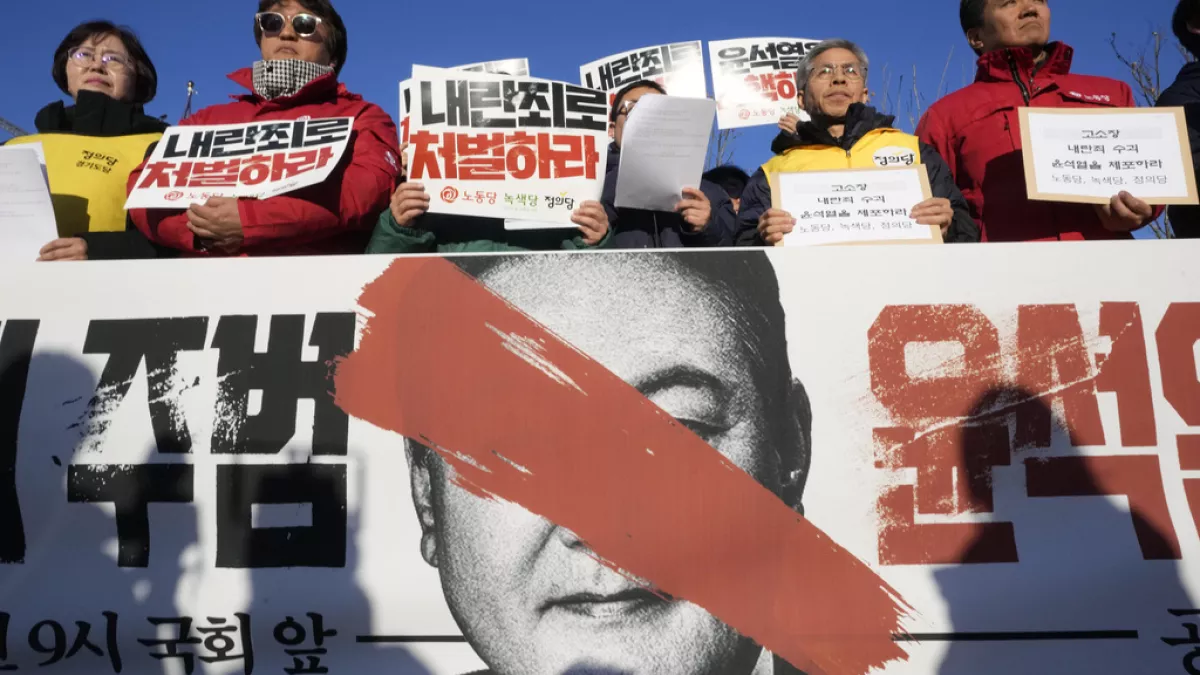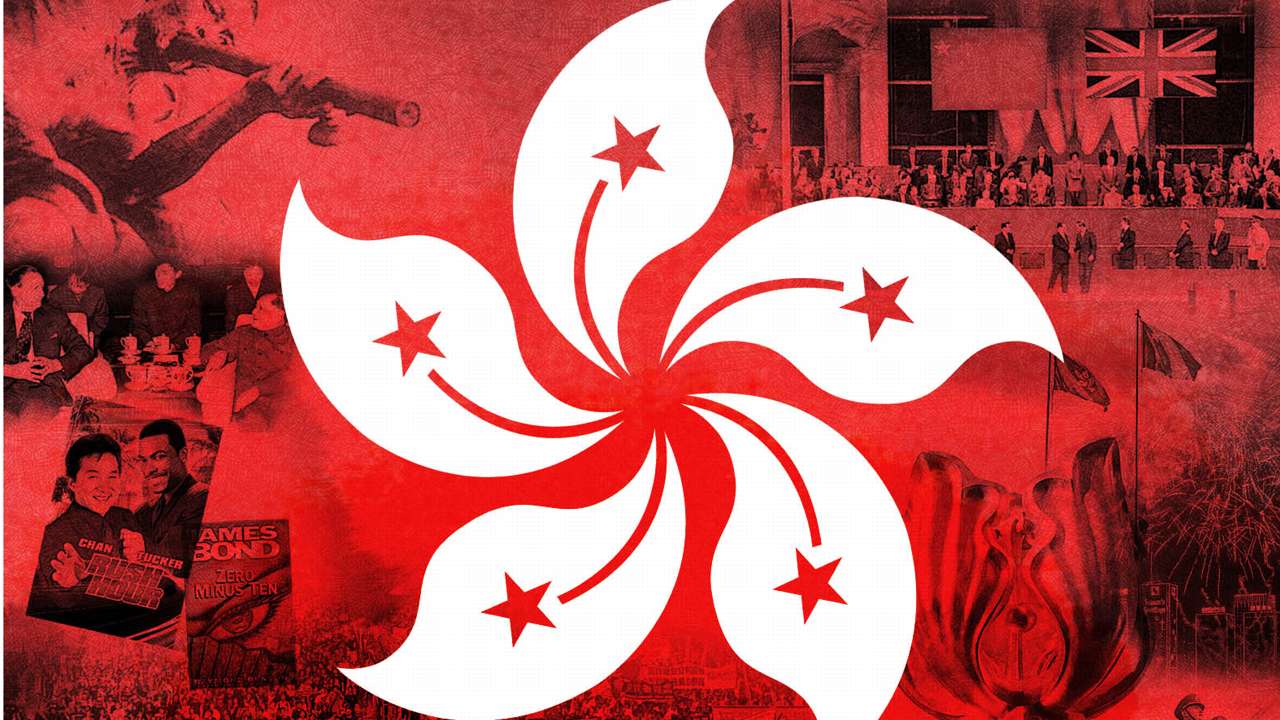This paper is written by Siya Duggal, a Guest Author at SYNERGY.
ABSTRACT
This article concentrates on British colonial policy in South Asia, mapping the transition from governance under the East India Company to a larger role for the British government. It details the transition from paternalist ideologies to a civilizing mission. In the late eighteenth century, the East India Company (EIC) established itself as a government and justified its rule through reliance on Indigenous culture. Therefore, the EIC’s rule included British architects designing socioeconomic policies inspired by South Asia’s native traditions. To highlight the paternalist nature of colonial policy before the 1830s, this article zeroes in on the land settlement policies of zamindari and ryotwari, the role of orientalist scholars, and the British codification of Hindu and Muslim personal laws. The 1830s saw colonial policy transition from this preservation of native traditions to a civilizing mission whereby the British portrayed themselves as rulers superior to the subcontinent’s inhabitants. This article examines the cases of sati (i.e. widow-burning) and thuggee to demonstrate how colonial policy began increasingly embodying a civilizing mission rhetoric. It also explores how Anglicization – the imposition of British ideals such as free trade, evangelicalism, and utilitarianism – characterized the colonial policies aimed at ‘civilizing’ the subcontinent.
INTRODUCTION
The British colonial state, in the nineteenth century, sought to advance South Asian civilization yet maintain the subcontinent’s indigenous landholding and social practices. This ironic combination of progress and preservation was represented in the colonial state’s land settlement programs and the codification of laws. As the East India Company transitioned from simply trading in the subcontinent to establishing itself as a government, it justified its rule by relying on native culture. However, the EIC’s interpretation of indigenous traditions transformed native culture.[1] The fundamental values of British colonial rule were “security of private property…rule of law…and the idea of ‘improvement’.” [2] Thus, while relying on and preserving Indian traditions, the EIC also endeavoured to bring progress to the subcontinent by improving these traditions. In the 1830s, the colonial policy shifted from blending preservation and progress to embodying a civilizing mission. This mission was characterized by the imposition of British ideals on the subcontinent and the abolishment of what the British viewed as ‘barbaric’ South Asian traditions.
PROGRESS THROUGH PRESERVATION UNDER THE EAST INDIA COMPANY
Land Settlement Policies
The two key land settlement policies introduced under the EIC’s rule, zamindari and ryotwari, reflected the British aim to bring progress to the subcontinent as they incorporated the British concept of private property rights while preserving indigenous land holding methods. These land settlement policies were two visions for land settlement and agricultural stability in early colonial India that played key economic and ideological roles in the transition to colonial rule in the late 18th to early 19th century. They sought to address economic challenges, secure wealth, and increase revenue. In terms of ideological functions, zamindari and ryotwari reflected the British aspiration to curate a system of governance that combined Indian native institutions and values considered to be essential for ‘civilization’.
Due to the significant cultural differences, the British considered their government system inappropriate for India. They wished to adhere to native institutions while transforming India from despotic to ‘civilized.’[3] This British vision to blend ‘civilized’ values with Indian institutions was reflected by the zamindari and ryotwari land settlements. Zamindari and ryotwari were distinct approaches, but both were ultimately aimed at revenue collection enforced by the courts, which mimicked Britain’s reliance on courts to establish and protect property rights while “enforcing payment of the ‘king’s share of revenue.’”[4] Zamindari and ryotwari also embodied the British belief, voiced by Edmund Burke, an eminent political philosopher in the 18th century, that private property was “the heart of an enduring social order.”[5]
The Bengal Permanent Settlement established the zamindari vision in 1793 under Governor-General Lord Cornwallis.[6] This legislation transformed zamindars from revenue-collecting intermediaries under the Mughals to title-holding landlords.[7] The British sought to determine who “owned” land to make them responsible for paying revenue.[8] Since the peasant agriculturalists were making payments to their superiors, the zamindars, the British regarded zamindars as landlords and peasants as renters.[9] Zamindars were equated to British gentlemen-farmers, and the British believed that if they secured these collectors’ property rights, they would be as enterprising as their English counterparts.[10] This view was flawed since Mughal zamindars performed a variety of tasks on the land, including exercising their customary hereditary right to collect revenue, but they never had title to the land; they could sell or transfer their revenue-collecting rights but not the land itself.[11] Cornwallis’ predecessor, Hastings, made many disastrous experiments at revenue collection – i.e. auctioning and leasing the right to collect taxes – which led to the Bengal Famine that killed approximately one-third of Bengal’s population.[12] The zamindari settlement was meant to address the economic concerns caused by this shortcoming by using a pre-existing Indian institution; however, the flawed understanding of the Mughal zamindars exacerbated problems.[13] The zamindari approach reduced peasants to tenants without rights, and zamindars’ estates were sold if they defaulted on paying taxes on it; while some zamindars lived comfortably on rents as peasants faced struggles, the high inflexible British demand caused many zamindars to default on taxes, and estates were often on the market.[14] Therefore, the EIC’s introduction of zamindari highlights the limitations of the British effort to ‘advance’ South Asia by combining indigenous landholding practices with the British belief that private property rights are fundamental to a state’s success.[15]
When the Romantic period began in Europe, Romantics proposed the ryotwari system to address the shortcomings of the zamindari system.[16] The ryotwari system took its name from the word ryot, meaning peasant; it portrayed the district collector as the ma-baap, mother and father, of the peasantry.[17] Thomas Munroe was a key Romantic figure who influenced the ryotwari system.[18] He discovered the ryotwari style as a young officer and endeavoured to make it the model for rural India.[19] His vision reflected the significance the British placed on India’s differences; he considered India too different to function using solely British institutions.[20] Munroe embodies the beliefs of the “paternalists” who supported the preservation of South Asian traditions and believed South Asian society would develop organically with limited assistance from British architects such as himself.[21] Consequently, the ryotwari vision offered governance using an improved form of an Indian native institution. Munroe described the ryotwari landholding style as mini-republics in which village communities function nearly independently of foreign relations.[22] He highlighted that the ryotwari model endured through India’s dynastic changes and revolutions, declaring it lasts “where nothing else lasts.”[23] Like the zamindari system, the ryotwari vision adhered to the British ideology that private property was key to generating wealth; ryotwari was also similarly rooted in the British goal of enacting the rule of law and improving India.[24] However, a key contrast was that ryotwari granted property rights to peasant cultivators rather than zamindars.[25] Further, in ryotwari settlements, unlike their zamindari counterparts in Bengal, the British attempted to ensure their economic prosperity by retaining the right to re-assess their revenue share.[26]
Both the zamindari and ryotwari settlement visions had key economic and ideological functions in the transition to British colonial rule from the late 18th century to the early 19th century. The zamindari system transformed the zamindar from a revenue-collecting intermediary under the Mughal state to a landlord collecting rent from its peasant tenants. The ryotwari system provided property rights to peasants, yet the British continued to demand high revenues. Neither system eventually proved to be of great success. These settlement visions did not account for waves of the ideas of liberalism, evangelicalism, and capitalism to sweep over colonial India after 1830.[27] Moreover, many zamindars could not afford the taxes on their estates, resulting in the constant reselling of lands, and the constantly increasing British revenue demands under the ryotwari settlement caused a rebellion in 1857. Both systems were attempts to blend South Asia’s indigenous landholding practices with British models, but neither was wholly successful.[28]
Orientalist Translation and Codification of Personal Laws
Additionally, under the EIC, classical orientalist scholars worked with upper-caste literate South Asians to translate ancient Persian, Sanskrit, and Arabic texts for governing purposes.[29] These orientalists also codified a vast amount of scholarship surrounding Hindu and Muslim customary legal traditions, and this documentation yielded the establishment of master codes on Hindu and Muslim “personal laws.”[30] Through these codes, the EIC created unified legislation to govern South Asia; thereby, bringing progress to the subcontinent using the British understanding of the rule of law – whereby laws must be written down and made public – while preserving Indigenous legal customs. While in England, the legal system acknowledges that customs change over time, the reliance on these master codes caused South Asia’s flexible customary legal practices to become fixed, and disputes would be resolved using these fixed practices.[31] Additionally, while preserving Hindu and Muslim personal laws, the colonial state also began introducing “English judicial procedures in the domains of civil and criminal law.”[32]
TRANSITION TO A CIVILIZING MISSION
After the 1830s, there was a transition from gradual infusions of British ideologies into Indigenous traditions to the belief that the British would have to intervene greatly to civilize South Asia. This new form of understanding South Asia was what Eric Stokes deemed Anglicization.[33] Anglicization had three main strands: free trade, utilitarianism, and evangelism.[34] While the classical orientalists and “paternalists” believed South Asian society would develop organically, the Anglicists believed South Asian civilization was static and required British intervention to progress; this concept is echoed in the history of India written by James Mill.[35] The Anglicists were liberal reformists who “conceived that human nature was…the same everywhere, and that it could be…completely transformed…by…law, education, and free trade.”[36] Consequently, the Anglicists believed free trade would “jerk Indian society and economy out of their…immobility,” utilitarianism would eliminate “backward…Indian social customs” through the enactment of good laws, and evangelization would uplift South Asians by Christianizing them.[37] Revisionist historians recently explained that these aims largely remained unachieved, yet they nonetheless were the foundation of 19th-century colonial policy and the civilizing mission it reflected.[38]
The Abolishment of Sati
This transition to a civilizing mission is well-represented by the abolishment of sati i.e. a Hindu custom that ordains widows to be burned along with their husband’s funeral pyre. Sati was criminalized in 1829 under the rule of Governor-General Bentinck.[39] While there were moral reasons to condemn sati, it was not a widespread practice; to illustrate, in the 1810s-1820s, there were 500-600 incidences yearly amidst a population of millions in Bengal.[40] The colonial state chose to criminalize sati, over other practices against women because it could be used to justify the colonial civilizing mission without provoking mass public unrest.[41] Sati was illustrated as a pornographic horror, and it was used to demonstrate the moral superiority of Britain.[42] The British highlighted the practice’s barbaric nature to obscure similarities between India and Britain’s patriarchal societies.[43] Sati’s prohibition also demonstrated how, through its civilizing mission, the colonial state reinforced “notions of Indian difference” rather than raising South Asians to match the British; notably, sati “reinforced notions of Indian women as helpless victims of religion.” [44] Furthermore, while criminalizing sati was characterized as an effort to save women, it also allowed the colonial state to strengthen itself by gaining a monopoly over violence, as sati was deemed homicide punishable under criminal law.[45] The British distinguished voluntary sati, not to account for women’s agency, but rather to accommodate orthodox Hindu groups and further their control over violence as while having a lighter sentence, voluntary sati was still considered a crime.[46] To criminalize sati, the British relied on their legal values and referenced translations of Hindu texts such as Manu’s Code and the Dharmashastras.[47] Thus, sati’s criminalization was a manifestation of the utilitarian belief that good laws would abolish barbaric South Asian customs. Sati’s abolition was flawed as the colonial state somewhat allowed the practice to continue by distinguishing voluntary sati, while also ignoring other crimes against South Asian women, such as widow remarriage.[48] Nonetheless, the practice’s criminalization effectively propagated an image of difference between the British rulers, who it deemed morally superior, and the Hindu subjects.
The Criminalization of Thuggee
The criminalization of thuggee further embodied the British civilizing mission. In 1836, the colonial state passed the Thuggee Act to invent the idea of criminal communities i.e. communities of thugs. In doing so, it distinguished the punishments for “professional crime” from those for a single crime.[49] Thugs were viewed as “roving bands of men, linked by hereditary ties” that ritually murdered travellers.[50] The classification of thuggee as such represented an opportunity for the British to justify their colonialism by emphasizing “their commitment to reforming a depraved Indian society.”[51] Like sati, thuggee portrayed the difference between European rulers and South Asian subjects as it “reinforced the idea of Indians as treacherous and unreliable.”[52] The Britishers compiled a list of criminal castes and tribes, reflecting the utilitarian principles that informed colonial rule during this period; it embodied the concept that good laws could override South Asian practices.[53]
Further, Thomas Babington Macaulay, head of the First Indian Law Commission, embodied the various strands of Anglicism and its civilizing mission rhetoric. As the Law Commission’s head, he supported utilitarianism’s emphasis on good governance by codifying laws. He also asserted that “free trade with civilized men was more profitable than governing savages.”[54] Thereby, he preached that the British needed to civilize India to ensure their profit. Furthermore, Macaulay promoted evangelical religio-cultural interventions as he played a vital role in switching British India’s official language from Persian to English and endorsed the establishment of English education in India.[55] The rhetoric of difference between the rulers and ruled was perhaps best embodied by Macaulay’s infamous statement: “I am quite ready to take the Oriental learning at the valuation of the Orientalists themselves. I have never found one among them who could deny that a single shelf of a good European library was worth the whole native literature of India and Arabia.”[56] This statement demonstrates the colonial belief that since European culture was superior to that of South Asians, it ought to be imposed on the subcontinent to civilize it.
CONCLUSION
On balance, while the British looked back to Indigenous traditions and sought to preserve them, they also aspired to ‘improve’ South Asia by reforming these Indigenous practices through the introduction of private property rights, rule of law, and other European ideals. The British land settlement visions and codification of personal laws embody this combination of progress and preservation. They demonstrate how initially the attempts at progress were slight modifications to native traditions; the land settlement visions modelled what the British understood as native governance methods, and the EIC codified their interpretations of native legal traditions. However, in the 1830s, the transition to a civilizing mission, characterized by Anglicization, involved the British deeply critiquing Indigenous practices and their belief that British intervention was necessary to ‘civilize’ South Asia. Rather than preserving native traditions, the British sought to impose their own ideologies and prohibit South Asian practices that they deemed uncivilized, namely sati and Thuggee. In abolishing these practices, imposing free trade ideology, and advancing English education, the colonial state created an image of difference, classifying itself as the morally superior ruler and the South Asian subjects as the inferior ruled subjects.
Siya Duggal is an undergraduate student at the University of Toronto, pursuing a double major in History and International Relations. Her academic interests include legal history, international law, and the role of human rights in international relations.
Bibliography
Birla, Ritu. “Colonial Strategies: The Cases of Thuggee and Sati.” HIS282Y1: History of South Asia. Class lecture at University of Toronto, Toronto, ON, November 7, 2024.
Birla, Ritu. “Consolidating Power under the Company: Alliance, Coercion, Resistance.” HIS282Y1: History of South Asia. Class lecture at University of Toronto, Toronto, ON, October 15, 2024.
Birla, Ritu. “Vernacular-Indigenous Movements of Reform and Improvement, Early 19th Century” HIS282Y1: History of South Asia. Class lecture at University of Toronto, Toronto, ON, November 5, 2024.
Bose, Sugata, and Ayesha Jalal. 2011. Modern South Asia: History, Culture, Political Economy. 3rd ed. London: Routledge.
Cohn, Bernard S. 1997. “Law and the Colonial State in India.” In Colonialism and Its Forms of Knowledge, 57–75. Princeton: Princeton University Press. https://doi.org/10.1515/9781400844326.
Mani, Lata. 2023. Contentious Traditions: The Debate on Sati in Colonial India, 119-156. Berkeley: University of California Press. https://doi.org/10.2307/1354153.
Metcalf, Barbara D, and Thomas R Metcalf. 2006. A Concise History of Modern India, 2nd ed. Cambridge: Cambridge University Press.
Metcalf, Thomas R. 1995. Ideologies of the Raj. Cambridge: Cambridge University Press.
Singha, Radhika. 1998. A Despotism of Law: Crime and Justice in Early Colonial India. Delhi; Oxford University Press.
- Ritu Birla, “Consolidating Power under the Company: Alliance, Coercion, Resistance,” HIS282Y1: History of South Asia (class lecture, University of Toronto, Toronto, ON, October 15, 2024). ↑
- Thomas R Metcalf, Ideologies of the Raj (Cambridge: Cambridge University Press, 1995), 17. ↑
- Barbara D Metcalf and Thomas R Metcalf, A Concise History of Modern India, 2nd ed. (Cambridge: Cambridge University Press, 2006), 58. ↑
- Bernard S Cohn, “Law and the Colonial State in India,” in Colonialism and Its Forms of Knowledge (Princeton: Princeton University Press, 1997), 59, https://doi.org/10.1515/9781400844326. ↑
- Thomas R Metcalf, Ideologies of the Raj, 20. ↑
- Barbara D Metcalf and Thomas R Metcalf, A Concise History of Modern India, 78. ↑
- Thomas R Metcalf, Ideologies of the Raj, 21. ↑
- Bernard S Cohn, “Law and the Colonial State in India,” 59. ↑
- Bernard S Cohn, “Law and the Colonial State in India,” 61-62. ↑
- Barbara D Metcalf and Thomas R Metcalf, A Concise History of Modern India, 78. ↑
- Ibid. ↑
- Barbara D Metcalf and Thomas R Metcalf, A Concise History of Modern India, 78; Bernard S Cohn, “Law and the Colonial State in India,” 59. ↑
- Thomas R Metcalf, Ideologies of the Raj, 21. ↑
- Barbara D Metcalf and Thomas R Metcalf, A Concise History of Modern India, 78. ↑
- Thomas R Metcalf, Ideologies of the Raj, 20. ↑
- Thomas R Metcalf, Ideologies of the Raj, 24. ↑
- Thomas R Metcalf, Ideologies of the Raj, 25. ↑
- Ibid. ↑
- Thomas R Metcalf, Ideologies of the Raj, 26. ↑
- Thomas R Metcalf, Ideologies of the Raj, 27. ↑
- Ritu Birla, “Vernacular-Indigenous Movements of Reform and Improvement, Early 19th Century,” HIS282Y1: History of South Asia (class lecture, University of Toronto, Toronto, ON, November 5, 2024); Thomas R Metcalf, Ideologies of the Raj, 27. ↑
- Thomas R Metcalf, Ideologies of the Raj, 26. ↑
- Ibid. ↑
- Thomas R Metcalf, Ideologies of the Raj, 27. ↑
- Barbara D Metcalf and Thomas R Metcalf, A Concise History of Modern India, 79. ↑
- Ibid. ↑
- Thomas R Metcalf, Ideologies of the Raj, 27. ↑
- Barbara D Metcalf and Thomas R Metcalf, A Concise History of Modern India, 79. ↑
- Ritu Birla, “Consolidating Power under the Company: Alliance, Coercion, Resistance.” ↑
- Ibid. ↑
- Ibid. ↑
- Sugata Bose and Ayesha Jalal, Modern South Asia: History, Culture, Political Economy, 2nd ed. (New York: Routledge, 2004), 59. ↑
- Ritu Birla, “Vernacular-Indigenous Movements of Reform and Improvement, Early 19th Century.” ↑
- Ibid. ↑
- Ibid. ↑
- Thomas R Metcalf, Ideologies of the Raj, 29. ↑
- Sugata Bose and Ayesha Jalal, Modern South Asia: History, Culture, Political Economy, 62. ↑
- Ibid. ↑
- Barbara D Metcalf and Thomas R Metcalf, A Concise History of Modern India, 82. ↑
- Ritu Birla, “Colonial Strategies: The Cases of Thuggee and Sati,” HIS282Y1: History of South Asia (class lecture, University of Toronto, Toronto, ON, November 7, 2024) ↑
- Lata Mani, Contentious Traditions: The Debate on Sati in Colonial India (Berkeley: University of California Press, 2023), 93. ↑
- Ritu Birla, “Colonial Strategies: The Cases of Thuggee and Sati.” ↑
- Ibid. ↑
- Thomas R Metcalf, Ideologies of the Raj, 41. ↑
- Ritu Birla, “Colonial Strategies: The Cases of Thuggee and Sati.” ↑
- Ibid. ↑
- Ibid. ↑
- Lata Mani, Contentious Traditions: The Debate on Sati in Colonial India, 122, 125, 150. ↑
- Radhika Singha, A Despotism of Law : Crime and Justice in Early Colonial India (Delhi ; Oxford University Press, 1998), 169. ↑
- Thomas R Metcalf, Ideologies of the Raj, 41. ↑
- Ibid. ↑
- Ibid. ↑
- Ritu Birla, “Colonial Strategies: The Cases of Thuggee and Sati.” ↑
- Ritu Birla, “Vernacular-Indigenous Movements of Reform and Improvement, Early 19th Century.” ↑
- Ibid. ↑
- Ibid. ↑








